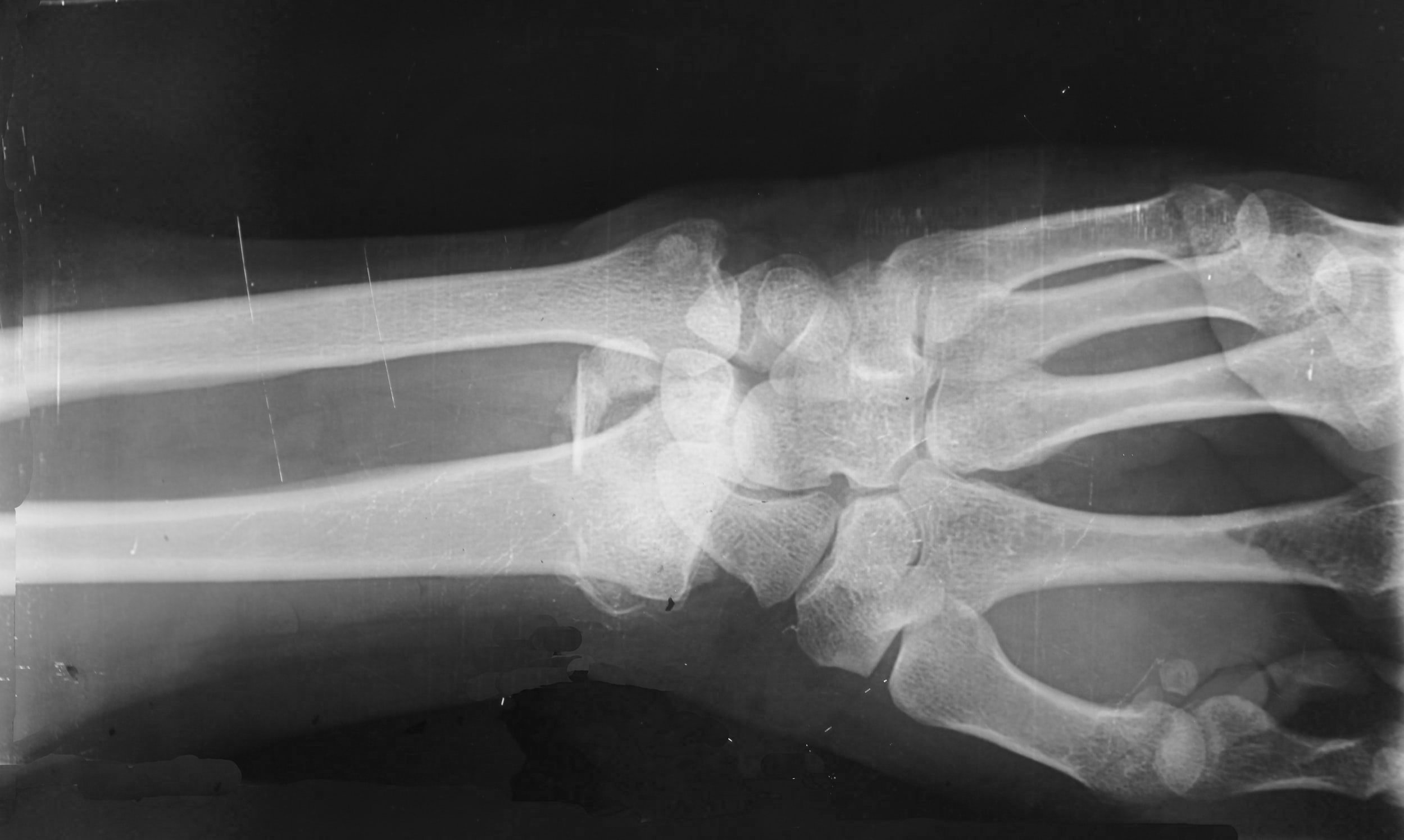
MEDICAL NEGLIGENCE
We all put a great deal of confidence and trust in the physicians and health care providers who attend us—and we should. The United States boasts one of the most advanced health care systems in the world, and there is no question that the majority of our doctors and hospitals work tirelessly to ensure our health and safety.
But there is also no denying that errors in medical care and judgment do occur, and oftentimes, these failures are the result of avoidable negligence and malfeasance. In fact, as many as up to 400,00 Americans die each year as a result of medical errors, making it the third greatest cause of death in this county. Estimates are that injuries arising from medical malfeasance in and out of the hospital setting are over 1,000,000 annually. And the Institute of Medicine estimates that over 1.5 million Americans are victimized due to prescription errors. At the highest level, some studies have suggested that the combined number of medical injuries (in hospitals and in private practice) is in the millions every year.
When unfortunate mistakes occur in a medical or hospital setting, the law provides remedies to recover for the resulting losses including losses for medical expense, lost income, and monetary damages to compensate for physical disabilities and pain and suffering occasioned from these tragic medical errors.
The legal standard of proof for medical malpractice is defined as "professional negligence where the healthcare provider deviates or departs from the accepted standard of care”. Medical errors that could be the basis of a lawsuit include:
A physician’s failure to diagnose a serious condition or illness such as cancer, infection or a progressive disease which requires immediate diagnosis and medical intervention
The surgical team’s failure to perform surgery with the accepted and required standards of care
The physician’s failure to inform the patient of the risks associated with treatment
The physician’s failure to refer the patient for further consultation with specialists, or for additional and necessary diagnostic tests necessary to establish the appropriate diagnosis or condition
The hospital’s failure to prevent patient injuries which occur from falls and other mishaps during treatment and hospital in-patient care
Cancer Misdiagnosis
Cancer is the second greatest cause of death in the United States surpassed only by cardiac disease-related deaths. This year alone more than 1.4 million new cases will be identified. That’s 1 in every 4 deaths in this country, approximately 560,000 people annually. Countless more will go undiagnosed. All told, treatment costs account for 25 per cent of the nation’s annual healthcare expenditures.
In a series in The New York Times (Cancer Patients, Lost in a Maze of Uneven and Complicated Care, 2007 ), as relevant today as when it was first published, the expose’ described in graphic terms what leading lawyers focusing on these issues have known and advocated for years: while cancer rates fall, (1) many people succumb to the consequences of missed or belated diagnosis, with physicians under appreciating the early diagnostic signs of cancer; (2) still others receive treatment which is inadequate to treat and resolve their cancers, or even worse, treatments which are inappropriate or outdated for those cancers; (3) patients remain ill-advised and uninformed about treatments available to them, and many are unable to avail themselves of these treatments because insurance may not cover those expenses.
The leading cancers Americans face today include lung. breast, colon, and prostate cancers. Ovarian and pancreatic cancers are also on the rise, and early diagnosis and treatment intervention for these, among others, are critical.
According to the authors, for example, colon cancer is preventable and one of only of two cancers for which tests can identify and eliminate pre- cancerous growths, stopping the development and spread of cancer in its track. Cervical cancer is the other. Yet many people do not regularly receive the proper screening either for fear of the tests (colonoscopy for cancer, pap smear for cervical), ignorance of the existence and necessity of these, or the un-affordability of these tests, which are often not covered by their insurance carriers.
Colon cancer remains the second leading cause of cancer, surpassed only by lung cancer primarily attributable to smoking.
The Times piece goes on to state that several studies have reported that significant numbers of patients may be missing out on cancer treatments which could treat or prolong their lives. Amazingly, 15 to 25 per cent of breast cancer victims, for example, never receive life-saving radiation treatments, and another 20 to 30 percent fail to take, or do not receive, anti-estrogen drugs, considered a mainstay. According to the authors these failings arise from miscommunication between patient and physician or fear for lack of medical insurance.
Ovarian cancer, one of the deadliest gynecologic cancers, has been the subject of renewed interest of late, because of the devastating toll on American families and economics that this disease causes. Early detection and treatment here is critical, and yet there remains no standardized diagnostic screening, and until only June 2007, no uniformly recognized identification of symptoms. These cancers are not detectable on pap or routine gynecological exams, although some experts maintain that trans-vaginal sonograms can provide earlier detection in some cases. Yet the test is not standardized or routine, and often not covered by insurance. And while surgery remains the only treatment for these women, too many patients, according to Dr. Barbara Goff, a Gynecologic Oncologist at the University of Washington in Seattle, do not receive the proper surgery.
The Times also reports men with prostate cancer receive, ironically, too much treatment, with wasted resources and needless pain and risk. A study of men treated between 2000 and 2002 demonstrated that 10 percent were over treated with radical surgery and another 45% over treated with radiation.
Colon cancer victims receive chemotherapy only 65 per cent of the time, while studies suggest it has proved beneficial for many victims and is recommended for 80 per cent of all patients. This reflects an inconsistency in medical standards around the country, with both race and ethnicity coming into play. A study in the Journal of Clinical Oncology described jarring findings of inequitable surgical treatment among white, black, and Hispanic breast cancer surgery patients, with white women receiving the higher standard of care.
As advocates of patients, the legal profession for years has seen the consequences of missed diagnosis and inadequate treatment of cancer patients. Robbed of life expectancy and their quality of life, many victims seek legal redress when medical and scientific communities have failed them. Oftentimes,.it is too late for them, and it is the surviving spouse, children and parents who seek answers, and legal compensation from a failed medical system.
For too long the answer has been legislated tort reform, so higher insurance rates could be avoided. But as The Times article demonstrates, the true answer lies in aggressive and proactive diagnostic care, treatment, and public education.
Birth Related Injuries
HELPING THE FAMILIES OF CHILDREN INJURED DURING DELIVERY
Brain injuries during childbirth can result in serious developmental delay and intellectual disabilities as well as physical challenges, such as cerebral palsy and other conditions that impact a child’s basic motor functions.
Many babies who suffer brain damage or head injuries during birth will live very long lives, but the cost of caring for these children can be astronomical. If your child suffered a brain injury as a result of medical negligence during delivery, you will need help obtaining the money required to provide adequate long-term care.
That is where we come in. We seek compensation for families whose children have suffered brain damage during labor and delivery. To schedule a free consultation to learn how we can help you get the compensation you need to care for your child, contact our office online or call (646) 779-8520.
Surgical Errors
REPRESENTING PATIENTS INJURED BY SURGICAL ERRORS IN NEW YORK
Doctors are human, and errors in the operating room happen. But some surgical errors could have been avoided, if only the surgeon and surgical staff had acted in accordance with the accepted standard of medical care.
We help people who have been injured due to surgical errors and those who have lost loved ones as the result of negligent medical practices. We have been serving the legal needs of New Yorkers for more than 40 years and have a long track record of success winning results for victims of medical malpractice.
Types of Surgical Errors
Errors in the operating room are more common than one might expect. Some of the most common surgical errors include:
Improper technique resulting in unexpected complications and death
Unnecessary surgery
Leaving behind surgical tools in the body
Failing to properly sterilize surgical tools causing infection
Any of these mistakes can cause serious harm to a patient, whether by creating a new problem, failing to address the original problem, or worsening the condition it was meant to treat.
Contact us today online or by telephone at (646) 779-8520.
Pharmaceutical & Prescription Errors
How common are medication errors?
The FDA receives more than 100,000 reports every year that are associated with medication errors (FDA, 2019)
Forty-one percent of Americans report having been involved with a medical error either personally or secondhand (Institute for Healthcare Improvement/NORC at the University of Chicago, 2017)
More than 7 million patients in the U.S. are impacted by medication errors every year (Journal of Community Hospital Internal Medicine Perspectives, 2016)
Ten percent of hospital patients will be subject to a medication error (NCBI, 2019)
A staggering amount of patients fall prey to the ill-advised and inappropriate administration of drugs and medications prescribed by the very doctors treating them, oftentimes with serious Injury or even death as a result
If you or a family member has been injured from a medication or prescription error, feel free to contact us to discuss your legal rights at (646) 779-8520.
Nursing Home Abuse
Injuries sustained in a nursing home will depend on the type of abuse that occurred. Many residents will suffer long-term disabilities and serous medical conditions, and even death, as a result. The most common injuries that could indicate nursing home abuse include:
Bedsores or pressure ulcers
Broken or fractured bones
Concussions
Medication errors including improper dosing, prescription errors and failures in providing necessary medication which can lead to brain damage, bleeding, altered moods, physical dependency, or other health complications
Internal bleeding and organ failure
Infections
Burns
Cognitive impairments and decline
Loss of vision or hearing
If a family member has been injured from nursing home abuse, contact us to discuss your next legal steps at (646) 779-8520.
Medical Malfeasance & Errors
Medical errors are a serious public health problem and a leading cause of death in the United States. It is estimated that approximately 400,000 hospitalized patients experience some type of preventable harm each year according to the authors of a recently published study focusing on the occurrence and reporting of medical errors in the United States.*
According to that study, “medical errors are of two varieties: errors of omission occurring as a result of actions not taken. (Examples are not strapping a patient into a wheelchair or not stabilizing a gurney prior to patient transfer). And errors of commission occurring as a result of the wrong action taken. (Examples include administering a medication to which a patient has a known allergy or not labeling a laboratory specimen that is subsequently ascribed to the wrong patient).”*
It is estimated that medical errors in hospitals and clinics result in approximately 100,000 deaths per year, making it the third leading cause of death in this country according to an article in the BMJ (British Medical Journal).* Other estimates suggest the number may well be nearer to 400,000 per year. The following are the most common medical errors (AHRQ, 2020):
Adverse drug events
Catheter-associated urinary tract infections
Central line-associated bloodstream infection
Injury from falls and immobility
Obstetrical adverse events
Pressure ulcers (bed sores)
Surgical site infections
Venous thrombosis (blood clots)
Ventilator-associated pneumonia
Medical errors typically include:
Missed diagnoses affecting 40,000 to 80,000 patients per year* and involve clinicians, radiologists, and pathologists. The most common diagnostic errors that occur in primary care settings include failure to order appropriate tests, faulty interpretation, failure to follow-up, and failure to refer
Delay in treatment after a diagnosis is made
Surgical errors
Failure and malfunction of devices and equipment
Medication prescription and administration errors
Hospital related infections
Reduced nursing staff to decrease hospital overhead
If you have a question concerning an injury you or a family member have sustained, or a death of a loved one which you believe may have been caused by medical error, please call us for your free consultation at (646) 779-8520.
Medical Error Reduction and Prevention; Thomas L. Rodziewicz; Benjamin Houseman; John E. Hipskind. Jan. .4. 2022. https://www.ncbi.nlm.nih.gov/books/NBK499956/#_ncbi_dlg_citbx_NBK499956
James JT. A new, evidence-based estimate of patient harms associated with hospital care. J Patient Saf. 2013 Sep;9(3):122-8. doi: 10.1097/PTS.0b013e3182948a69. PMID: 23860193.
Medical error—the third leading cause of death in the US. Medical error is not included on death certificates or in rankings of cause of death. Martin Makary and Michael Daniel assess its contribution to mortality and call for better reporting Martin A Makary professor, Michael Daniel research fellow Department of Surgery, Johns Hopkins University School of Medicine, Baltimore, MD 21287, USABMJ 2016;353:i2139 doi: 10.1136/bmj.i2139 (Published 3 May 2016
According to the Join Commission, a United States-based nonprofit tax-exempt 501(c) organization that accredits more than 22,000 US health care organizations and programs. The international branch accredits medical services from around the world. A majority of US state governments recognize Joint Commission accreditation as a condition of licensure for the receipt of Medicaid and Medicare reimbursement.






